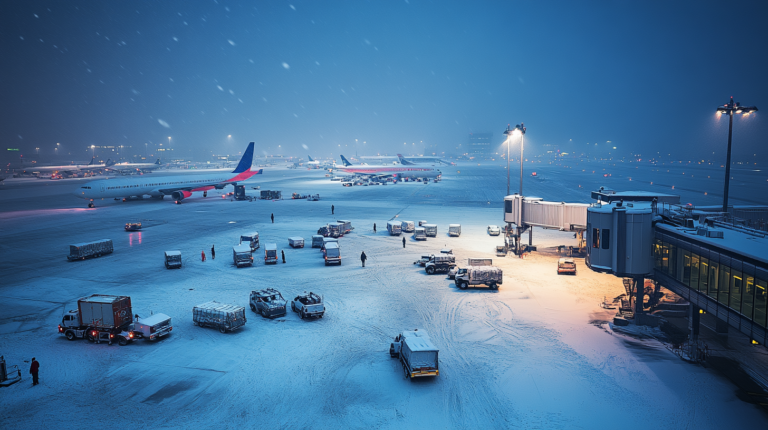Mastering Business Travel & Subsistence: A Seat5A Guide

I’ve often observed that business travel can be one of the most dynamic parts of working life—packed with opportunities but also potential costs if not managed properly. Over the years, I’ve refined my approach to subsistence expenses through a blend of practical research and real-world trial-and-error, ensuring that every trip stays efficient, compliant, and surprisingly rewarding.
1. Understanding the Basics: Ordinary, Necessary, and Reasonable

Under U.S. IRS guidelines, any travel expense must fulfill three requirements to be deductible: it should be ordinary (commonly accepted within your profession), necessary (helpful or appropriate for your business), and reasonable (not overly lavish). I’ve seen colleagues push the boundaries with five-star extras, only to find those costs severely questioned by financial auditors. No one wants an audit to spoil their productivity streak.
In simpler terms, be honest about what truly supports your professional goals. Airfare, lodging, and relevant meals generally qualify, but if the flight home includes a luxury detour for personal entertainment, that portion typically becomes non-deductible. In the UK, HMRC mirrors many of these principles. According to recent industry data, inaccurate claims on “ordinary and necessary” expenses remain one of the top triggers for further review. Meticulous documentation safeguards you if you ever need to justify your business decisions.
When it comes to deciding if a trip is primarily business, I rely on a simple test: if the purpose of the trip could stand on its own as a legitimate professional commitment, then it likely satisfies the “fully business-related” standard. Some travelers underestimate how quickly small add-ons can accumulate, so I always keep a clear boundary between personal indulgences and actual work requirements.
2. The 50% Meal Deduction

One rule that can catch frequent flyers off guard is the 50% meal deduction limit in the U.S. That means if I run up a dining bill of $100 while traveling for work, only $50 of that can typically be deducted. It’s not that the IRS doesn’t want business owners to enjoy good meals; they just want to ensure that consistent rules apply across different industries and professions.
For practical management, I’ve found that using a combination of receipts and per diem allowances helps me stay organized. The General Services Administration (GSA) regularly updates per diem rates, which I consult before each trip. A recent study suggests that over 60% of small business owners still rely on paper receipts for auditing, which shows there’s plenty of room for digital solutions. In the UK, HMRC has its own benchmark subsistence rates, so double-checking which option is more advantageous can yield significant savings in the long run.
Whether I’m grabbing a sandwich during a whirlwind layover or taking an overseas client to a nicer restaurant, I keep track of the details. Those small receipts can make a giant difference at tax time. Nothing beats a smooth deduction process to close out a business trip on a positive note.
3. Self-Employed vs. Employee Deductions

Having spent time as both an independent contractor and later partnering with companies, I know firsthand how drastically deduction rules vary. Self-employed folks generally report allowable travel costs on Schedule C in the U.S., which can include airfare, hotel stays, and half the cost of meals. If I built my livelihood around traveling, these deductions might substantially lower my taxable income.
When I was employed full-time, I discovered that reimbursed travel expenses generally had to go through the company’s accountable plan. If my employer didn’t have such a structure, claiming any unreimbursed travel costs on my personal return was almost impossible. According to a 2024 U.S. Treasury report, a large percentage of employees remain unclear on how to claim business travel costs, underscoring the importance of communication between employers and staff.
On the UK side, reimbursed employee travel expenses often remain exempt from tax as long as the trip meets specific qualifications. Still, I recommend verifying whether your employer is up to date on National Insurance contributions. The difference between a seamless reimbursement and a tax headache often boils down to clear, documented policies and open dialogue in the workplace.
4. International Travel and Extended Stays

Whenever I plan an international trip, I’m keenly aware of how easily personal days can blend into business activities. If I tack on vacation time, I make sure to isolate expenses that apply strictly to the professional portion of my stay. The IRS, for example, will measure how many days I’m actually handling business tasks versus personal pursuits—any imbalance, and I risk losing some deductibility claims.
In 2025, cross-border travel is projected to reach its highest levels yet (according to the World Tourism Organization), making this issue more significant than ever for frequent flyers. For extended conventions or industry events, the IRS caps daily allowable costs to prevent inflated claims. In my experience, even small mistakes like including a personal sightseeing tour under “business activities” can cause major headaches later.
Within the UK, the complexities of reclaiming VAT for overseas expenditures demand their own careful recordkeeping. I never assume an expense is automatically covered. Instead, I note every relevant detail—from flight numbers to itemized meal receipts. That way, if HMRC comes calling, I have a bulletproof paper trail at the ready.
5. The Power of Proper Recordkeeping

In my view, top-notch recordkeeping isn’t just about compliance—it’s about peace of mind. I’ve experimented with everything from scanned PDFs to automated phone apps for receipts. Digital solutions make a massive difference: they let me categorize expenses immediately, and I back up that data regularly via the cloud.
According to a report by the National Small Business Association, nearly 30% of business owners cite insufficient documentation as a leading cause of missed deductions. I’ve talked to countless travelers who missed out on hundreds—or even thousands—of allowable expenses simply because they discarded receipts or forgot to detail tips and tolls. Don’t let small oversights trip you up in big ways.
To ensure I’m always consistent, I check all my credit card statements and match them to my physical or digital receipts. If there’s a discrepancy, I make notes immediately rather than waiting. This process can feel tedious at first, but watching the savings roll in is the best payoff around.
6. Tools and Strategies for Expense Management

Keeping travel costs on track has become easier with technology, but I also adhere to fundamental strategies. Automated platforms like modern expense-tracking software can integrate with airlines, hotels, and even meal providers to supply real-time cost insights. According to industry data, such tools can cut administrative expenses by up to 20%, freeing up more time for actual business priorities.
I also frequently consult with established accounting services. While I love diving into the numbers myself, having professional advice can clarify complicated rules about VAT, per diems, or even currency conversions if my travel includes multiple countries. If your travel volume is significant, an accountant can help tailor a plan that minimizes risk while maximizing legitimate deductions.
Since travel costs often rank second only to payroll in many organizations’ budgets, a systematic approach to planning can pay huge dividends. Whenever I organize a trip, I finalize my budget early, decide on per diem rates when they’re advantageous, and stay watchful if my itinerary changes. Ultimately, if you put in the work upfront, you’ll have more freedom to enjoy your adventures and focus on what really counts: building professional value.
Final Thoughts

No matter how many times I’ve packed my suitcase, I still find that business travel can be a chance to blend professional objectives with new cultural discoveries. The key is approaching every expense with integrity and a strategy. While rules and regulations might continue to evolve, your informed approach to booking flights, lodging, and meal costs can keep you two steps ahead of any compliance pitfalls.
By understanding the requirements, documenting everything thoroughly, and using advanced tools or expert guidance, you can transform the typical chaos of travel into a streamlined process. Not only will you maximize the benefits of each trip, but you’ll also enjoy the journey a whole lot more.
Amelia Yeaher’s Take
From my vantage point, managing business travel expenses is an art form built on preparation, resourcefulness, and a healthy respect for the rules. Whenever I land in a new city, I’m reminded of how far good planning can go in making each journey seamless.
At the end of the day, I believe we can all travel smarter by blending practical research with a sense of wonder about the world around us. Stay curious, stay meticulous, and watch your next adventure thrive.






